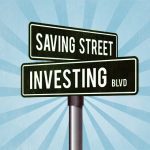Some readers have maxed out their TFSA and RRSP. Now what?
Here are some recent reader questions and comments (adapted for site):
Reader 1:
“I’ve finally been able to max out my TFSA and RRSP. I’m 41. Now what? Should I consider investing in a taxable account? If so, what should I own?”
Reader 2:
“Mark, I’ve been reading your site for years. I’ve put a priority on paying down our mortgage for many years now, and striving to max out our kids’ Registered Education Savings Plan (RESP) every year for their financial future. Those have been priorities number one and two for years.
When the TFSA came along, I thought it would be an excellent place to keep our family emergency fund for our house repairs and small renovations in a tax-free way but I’ve since realized by reading your site that I should have thought of this as an investment account (like you did) since day 1. I now invest in low-cost ETFs inside this account and I’ve never looked back! I have a six-figure portfolio thanks to you!
Now, with the mortgage balance down the high-five figures; RESPs maxed for our two kids and now our TFSAs maxed out as well – I’m thinking we should work on maxing out the RRSPs like you have and eventually get into taxable investing if we can.
Thoughts on my approach?”
Reader 3:
“Mark, I have been an avid reader of your blog for the last two years but this is my first intervention 🙂 Better later than never! My question today is how I can diversify my portfolio even more?
I’ve maxed out my registered accounts (RRSP: $32,000 in VEQT and TFSA: $75,000 also in VEQT) and invested significant chunks of money in a non-registered account ($50,000 in VEQT). I’m also helping my cousin with his RESP. I’ve also got an emergency fund with Tangerine.
At only 29, and single, I think I am off to a good start but it would be nice to find more ways to diversify my investments. I still have another $10,000 that I want to invest. What are some options?
- Real estate? (not sure about this) Maybe Real Estate Investment Trusts (REITs)?
- Crowdfunding?
- Peer-to-peer lending? (seems risky)
- Other?
Looking forward to your thoughts Mark!”
Wow, great stuff readers.
I mean, people thinking about investing inside your taxable accounts after your registered accounts are maxed; readers paying down their mortgage while diligently investing; folks wondering how to invest in a taxable account now that their emergency fund, TFSA and RRSP are managed and full: amazing stuff!
Get invested and stay invested!
Now, what should these readers do???
“It depends.”
Reader 1: I’ve maxed out my TFSA and RRSP. Now what?
With the TFSA and RRSP now full, I think this reader and other investors in this situation have plenty of options for your additional cash flow.
I would be curious if this reader had any debt? If so, I would tackle that. If so, and it was a very manageable balance, then I would absolutely consider to start investing in a taxable account.
You can read about some of the tax-efficient methods to invest in that account here.
I use the following set-up for some tax efficiency related to my income goals, your mileage may vary!
| TFSA | RRSP | Taxable Account |
| · Canadian dividend paying stocks· Canadian REITs | · Some Canadian dividend paying stocks· Mostly (and more over time) U.S. dividend paying stocks and U.S. ETFs | · Canadian dividend paying stocks to tax advantage of the dividend tax credit when I’m not working in a few years. |
Now, you’ll notice I have no bonds or GICs or lots of foreign equity above. That’s because I’m striving to own more foreign equity via U.S. ETFs over time.
I also don’t own any bonds or GICs because bond yields are terrible now (and likely will be for decades to come …) and I am very fortunate to have a workplace pension that is essentially a big bond. So, I figure to maximize my portfolio returns I might as well own equities over bonds long-term. So far, so good on that one.
Beyond any strategy above, I would further consider this investor to think about owning any Canadian non-dividend paying stocks for growth and/or potentially U.S. non-dividend paying stocks for the same reasons.
Why?
Capital gains (if and when you have to pay them) are a great form of taxation all things considered.
On the other end of the spectrum, fixed income and international dividends are taxed at 100% of your marginal rate. This means holding these assets in a taxable account is tax “poor”; it therefore makes more sense to own these types of assets in tax-sheltered accounts such as your TFSA, RRSP, LIRA and other registered accounts.
What exactly should the investor own? That’s totally up to them and their investment goals of course!
Taxation is a factor when it comes to investing but it shouldn’t drive all your decisions.
Reader 2: Time to work on maxing out RRSPs and then onto taxable investing – thoughts?
“Now, with the mortgage balance down the high-five figures; RESPs maxed for our two kids and now our TFSAs maxed out as well – I’m thinking we should work on maxing out the RRSPs like you have and eventually get into taxable investing if we can. Thoughts on my approach?”
I love your approach!
While I can’t speak to the income bracket this reader/investor is in, I suspect if he/she can pay down their mortgage, max out the kids’ RESPs (x2 it seems), max out their TFSA, and they’re already thinking beyond the RRSP to taxable investing: they are doing OK!
Although I didn’t follow this advice myself (I have since learned), I would absolutely advocate maxing out all tax-sheltered accounts before any taxable investing.
Why?
Simply put: why pay taxes (or capital gains if there is a sale for any appreciated stock) if you don’t have to?
Best to maximize the power of tax-free (thanks TFSA) AND tax-deferred (thanks RRSP) investing as much as possible.
This is why I suggest all Canadians work hard to max out their TFSAs, first, like you are doing reader before striving to max out their RRSP. Besides, if you can consistently (or easily) max out your TFSA every year (and maybe the TFSA of your spouse as well without fail) then:
- you’re probably making decent money to contribute to your RRSP anyhow after than, and/or
- you’re disciplined enough to contribute to your RRSP and not waste the refund to appropriately maximize the tax-deferred account benefits.
Reader 3: Age 29, I’ve maxed out my TFSA and RRSP, now what?
Party and travel abroad!
Kidding, somewhat …
Congratulations and yes, you’re “off to a good start” for sure … especially owning one of those low-cost ETFs like VEQT for built-in diversification and long-term growth.
What are some of your options for taxable investing?
I highlighted some of my favourite options above so personally I would stay away from peer-to-peer lending, crowdfunding and other similar avenues. I mean, sure, you could probably get good returns and potentially luck out with some of your choices but I think someone as smart as you who learned to invest in low-cost, diversified funds, should likely continue on that path.
You already own VEQT. That fund holds thousands of stocks from around the world, including some from Canada in the fund’s top-10, for a rock-bottom fee. With a long investing horizon, you’ll surely be rewarded. You’ve figured out the game already.
Image below from Vanguard site:
 The greatest stock market returns over time have typically come from a) being a boring investor/staying invested who
The greatest stock market returns over time have typically come from a) being a boring investor/staying invested who
b) retained ownership in a broad basket of common stocks or owned an index fund that held those stocks and many, many more. If history has any form of repetition, the same goes for our foreseeable future.
Real estate eh? I wouldn’t rule that out but certainly there are risks and headaches with being a landlord.
We were landlords once but it wasn’t for us. I ended up gravitating to REITs since I wanted to remain a landlord but without all the headaches. I have enjoyed that type of real estate ownership ever since.
Summary – how to invest in taxable accounts
For many Canadians or my American friends as well, the goal to max out contributions to your registered accounts first is both aspirational and potentially rewarding. Doing so will take some awareness and financial discipline.
Taxable investing, or simply what to do with your cash when your registered accounts are out of contribution room (now full of income and/or growth-generating assets like these), becomes a bit more complicated.
Generally speaking, if you still have lots of debt, pay that off or at least some of it off.
Once debt is eliminated or far more manageable should any lifestyle emergency occur, consider investing for capital gains.
If capital gains or at least the hope of capital gains is not really your thing, consider investing using Canadian dividend paying stocks for income and tax efficiency. In doing so, be mindful dividends are “grossed up” and any dividend income earned can be taxable, based on your other income sources.
For taxable investing, you’ll also have the added complication of managing your adjusted cost base. This must be done to accurately tabulate any rolling baseline for the costs of the assets you purchased over time against what you actually sold those assets for – thereby calculating capital gains or losses.
There are also the subjects of increasing your charitable giving or simply spending any excess funds to celebrate your hard-earned investing ways. Either one could be why your personal finance plan is personal.
Whatever you choose, to any and all readers that max out their TFSA and RRSP like I strive to do every year and then wonder what’s next (?) keep up the great work. You’re on a fine path to financial prosperity!
Thoughts on what these readers should invest in? Why change something that isn’t broken? Any successful retirees out there wish to weigh in on this nice to have problem for GenY and GenX?
 Mark Seed is a passionate DIY investor who lives in Ottawa. He invests in Canadian and U.S. dividend paying stocks and low-cost Exchange Traded Funds on his quest to own a $1 million portfolio for an early retirement. You can follow Mark’s insights and perspectives on investing, and much more, by visiting My Own Advisor. This blog originally appeared on his site on Jan. 28, 2020 and is republished on the Hub with his permission
Mark Seed is a passionate DIY investor who lives in Ottawa. He invests in Canadian and U.S. dividend paying stocks and low-cost Exchange Traded Funds on his quest to own a $1 million portfolio for an early retirement. You can follow Mark’s insights and perspectives on investing, and much more, by visiting My Own Advisor. This blog originally appeared on his site on Jan. 28, 2020 and is republished on the Hub with his permission


